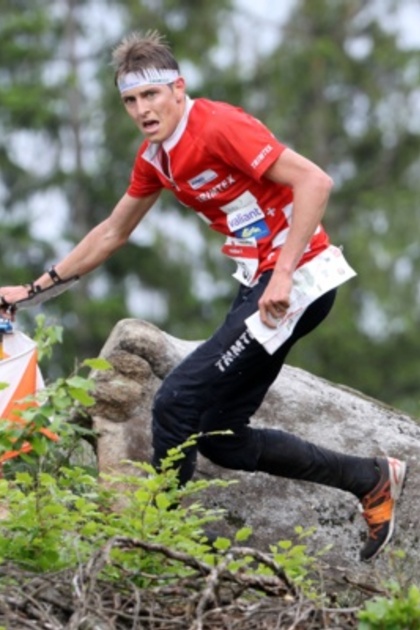
Interview with Matthias Kyburz
For around 10 years, Matthias Kyburz has ranked among the world’s elite in orienteering. The strong runner, who is studying biology, is convincing in any terrain and also rocks the scene at road and cross country races.
Unlike many others, you made the successful leap from junior to active athletics without hardly any problems. In your eyes, what are your success factors?
I think the main factor was my training program. I increased my training year on year and, with a training base of approximately 500 hours , was able to switch to the elite. It was a good base, but I was still a long way from reaching my limit. I was able to further increase the intensity and quantity, which also had an impact on my performance values. I also found the balance in my training, so I didn’t suffer any set backs due to injuries. The continuity in my training is therefore without doubt also a key factor.
As an orienteering runner you need more than fast legs. Can you give us an overview of your training?
My training is extremely diverse. This is also necessary because I complete 15-minute sprint races in the city through to long-distance runs of up to 100 minutes in Norwegian swamps.
I don’t count kilometres since I train very often in hilly terrain. But it would probably be somewhere between 100-150 kilometres.
My winter training consists of about two map training sessions per week. On top of this come one or two cross-training units. In a "normal" week, my training covers everything from challenging interval training on the track through to a two-hour-long cross-country jog. Two strength training units, not to mention foot gymnastic are also part of the program. In winter, you can also find me on cross-country skis and in summer, on the bike or road bike.
My most important recuperative measure is quite simply sleep. I see that I get 9 hours of sleep each night. Apart from that, I regularly attend physiotherapy and massage sessions.
Practically all Swiss orienteering runners spend a long period of time training in Scandinavia at least once during their career. Can you explain to us where the differences and challenges lie when running in Scandinavian forests?
The terrain in Scandinavia is technically more difficult. In the Swiss forests there are many paths. In Scandinavia, it can happen that you won’t find one single path on the map. In Switzerland, the forest floor is also considerably harder than in Scandinavia. We talk of hard and fast continental terrain and soft and energy-sapping terrain in Scandinavia. During our stays in the north, we not only try to train the physical component but also work on the technique.
You not only participate in orienteering competitions but are also very successful in road and cross-country runs. What do you find appealing about orienteering? What do you find fascinating about pure running competitions?
The unknown before the start of an orienteering race never fails to fascinate me. However well prepared I may be, I nevertheless still know “nothing” of the race 1 second before the start. Each race is technically, physically, and mentally a completely new challenge. I also enjoy the fact that I am able to discover unique natural landscapes.
In orienteering, single starts are usually the norm. In some instances I therefore miss the "first-to-finish" decisions. I find the man against man fight exciting at running competitions.
In what areas could road runners benefit from orienteering runners and vice versa?
In my view, orienteering runners and road runners can benefit a lot from each other. Unfortunately, the gap between them is only gradually starting to narrow. I think that we orienteering runners could benefit a lot from road runners when it comes to speed and running style. On the other hand, athletes could well endure somewhat more gradients, in the sense of strength training. I also think it wouldn’t hurt the athletes to train on uneven ground from time to time. This strengthens the foot muscles and improves coordination.
Foto: ZVG
Many thanks to Matthias Kyburz for the interesting answers. You can find more information on Matthias Kyburz here: www.matthiaskyburz.ch
This may be of interest for you too


